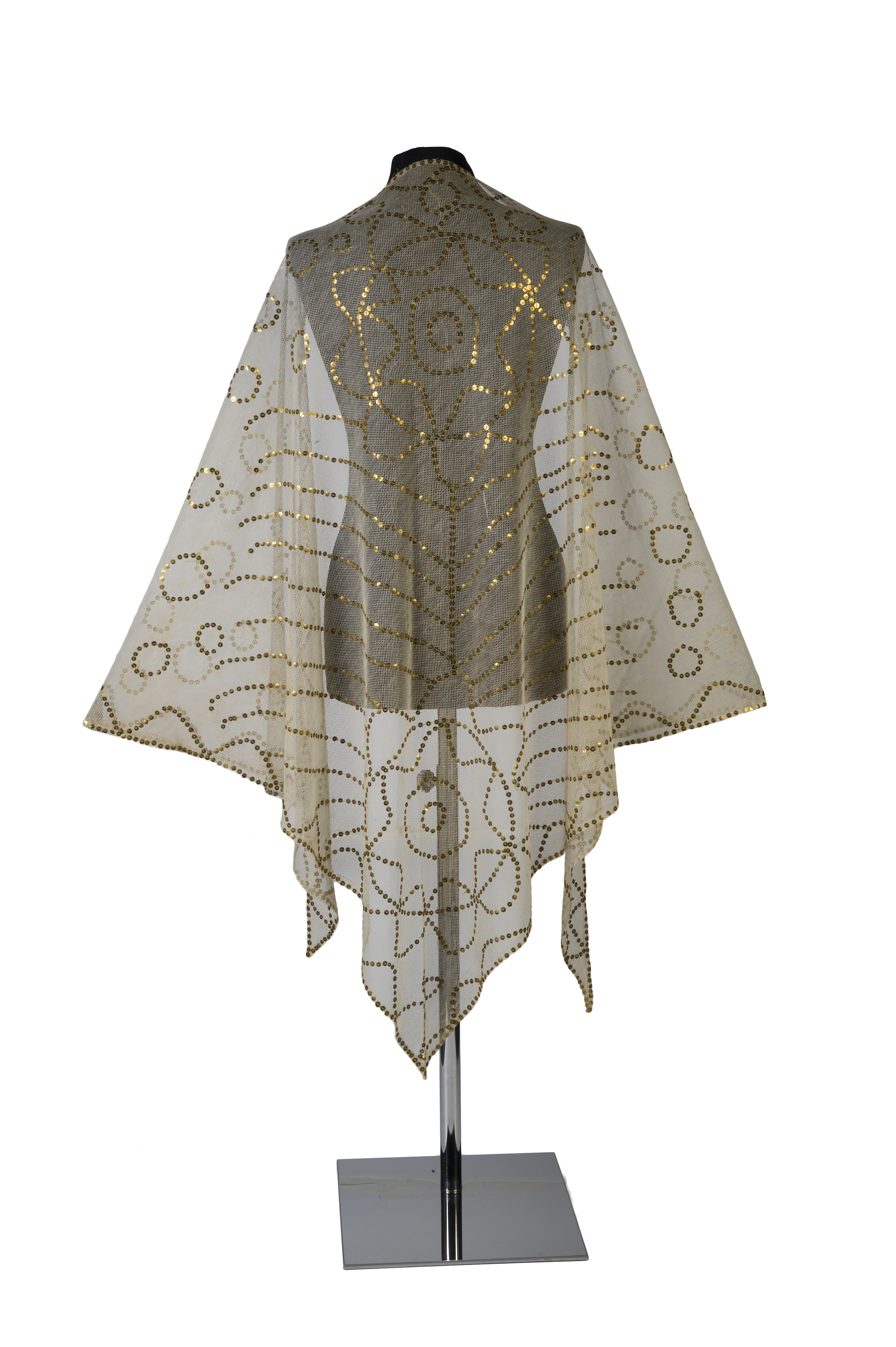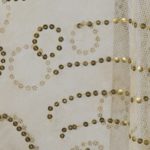Wedding veil
- What can we see?
We can see a thin white cloth, with gold sequins.
Look closely, what do you see?
- What do we know?
Many people have the tradition of wearing a veil at their wedding to partially cover their face before being unveiled at their wedding ceremony.
The first record in Judaism of veiling connected to weddings is the Torah when Rebecca covers herself with a veil before marrying Isaac. Today there are many different reasons why Jews may veil at weddings. Some argue it is to show that after the wedding a bride may have an added level of modesty, like covering her hair, to show that she is married. It could also symbolise that marriage is not about judging a person on their appearance. It could also represent that according to Jewish tradition, one of the husband’s obligations to his new wife is to clothe her. Another a commonly reason is that it reminds people of the story in the Torah when Jacob was tricked by Laban into marrying Leah before Rachel, as her face was covered by her veil.
Other Jewish wedding traditions include breaking a glass, reciting seven blessings and the bride encircling the groom. However, different streams of Judaism celebrate weddings in different ways. Some progressive streams of Judaism may choose not to include veiling in their ceremonies or may adapt this practice.
This veil is from the Bukharan Jewish community, who mainly trace their roots to Uzbekistan and the surrounding countries. This community is from the Mizrachi branch of Judaism.
- What do we wonder?
We might wonder who owned the wedding veil. We might wonder how old the wedding veil is. We might also wonder why this design was chosen.
What do you wonder?
- Object file
Object name: Bukharan wedding veil
Date: 1927
Catalogue number: 2000.25.2
Material(s): cotton and sequins
On display in the Jewish Museum: No.
Physically we can see that the veil is handmade and triangular, and made of coarse cream netting, hemmed at edges with decoration in gold sequins sewn with yellow thread. The pattern features two large rosettes in centre of veil, linked by a vertical line, surrounded by straight lines radiating outwards. The remaining area is covered with small circles of sequins and there is a continuous line of sequins around the hem, with a wave pattern adjacent.
This veil is part of a traditional Bukharan Jewish wedding outfit. The veil is worn over a brocade hat, and fixed with a gold ornament, the parchona. This veil is accompanied by a Bukharan style peach silk wedding gown (see the third image) also worn by Yaffa Kalendarova on her wedding day and which is also part of the collection of the Jewish Museum.
It was worn by Yaffa Kalendarova, for her wedding to Misha Abram on 17 August 1927, at the age of 19, in Kokand, Turkestan. The wedding was celebrated over two days – the first day in Yaffa’s parent’s house with her female friends, the second in her husband’s house, with more relatives and friends. The Kalendarev family were wealthy textile manufacturers but after the Russian revolution their property was confiscated. Misha Abram was arrested in 1928 for illegal trading and sentenced to five years in a labour camp; after three and a half years he was released and expelled to Afghanistan, eventually reaching England. Yaffa was also under suspicion, and finally left Kokand in 1932, eventually joining Misha in London.
Bukharan Jews had their own dress code, which was similar to the surrounding Asian cultures but also had their own particular traditions. At Bukhari Jewish weddings today, some brides and the close relatives still wear the traditional kaftan (long robe/tunic).



